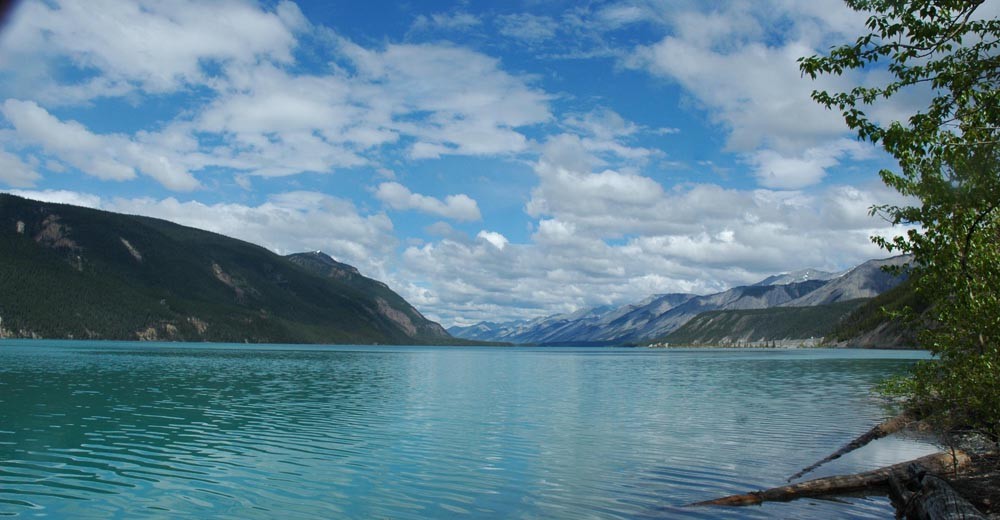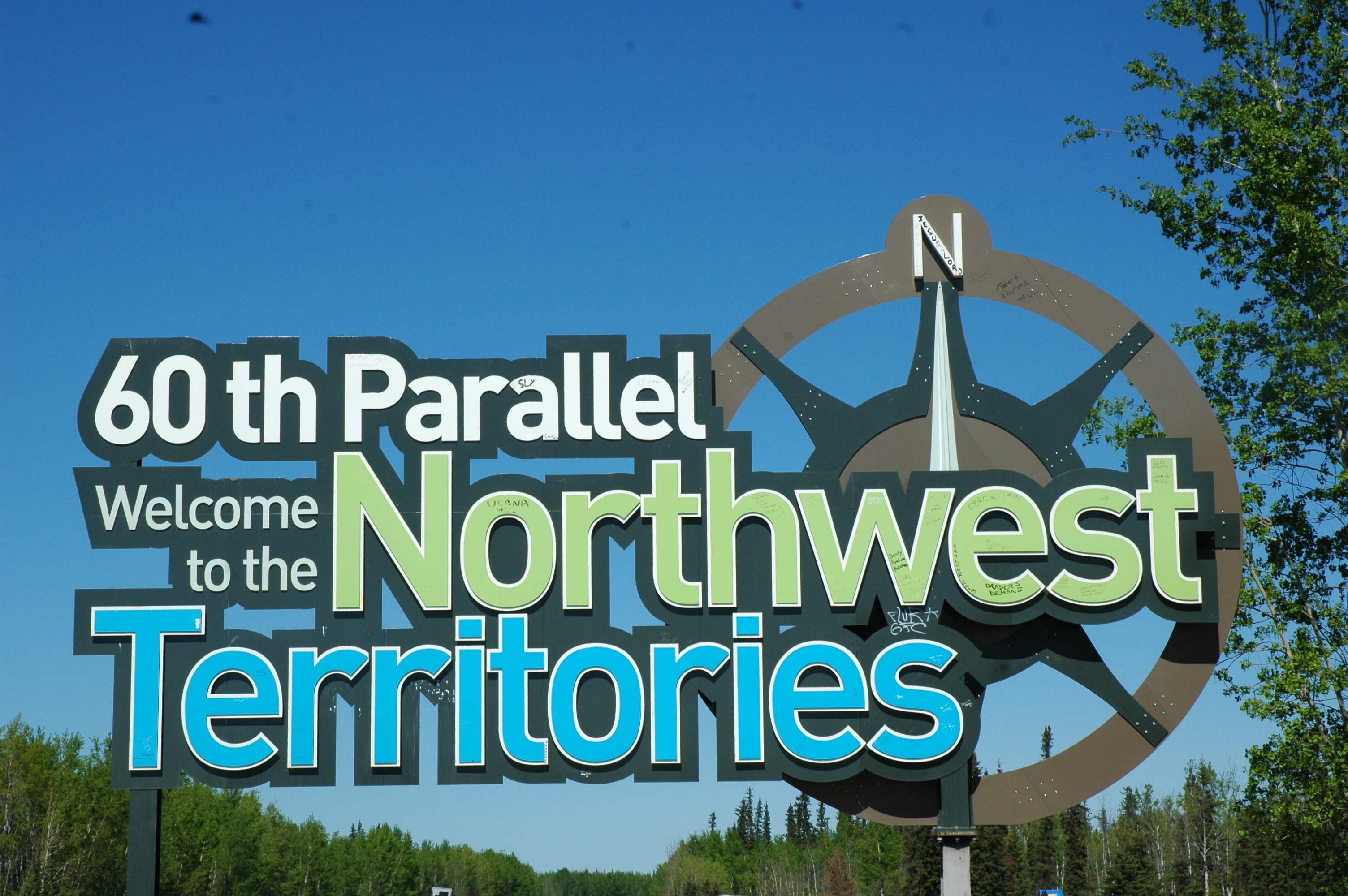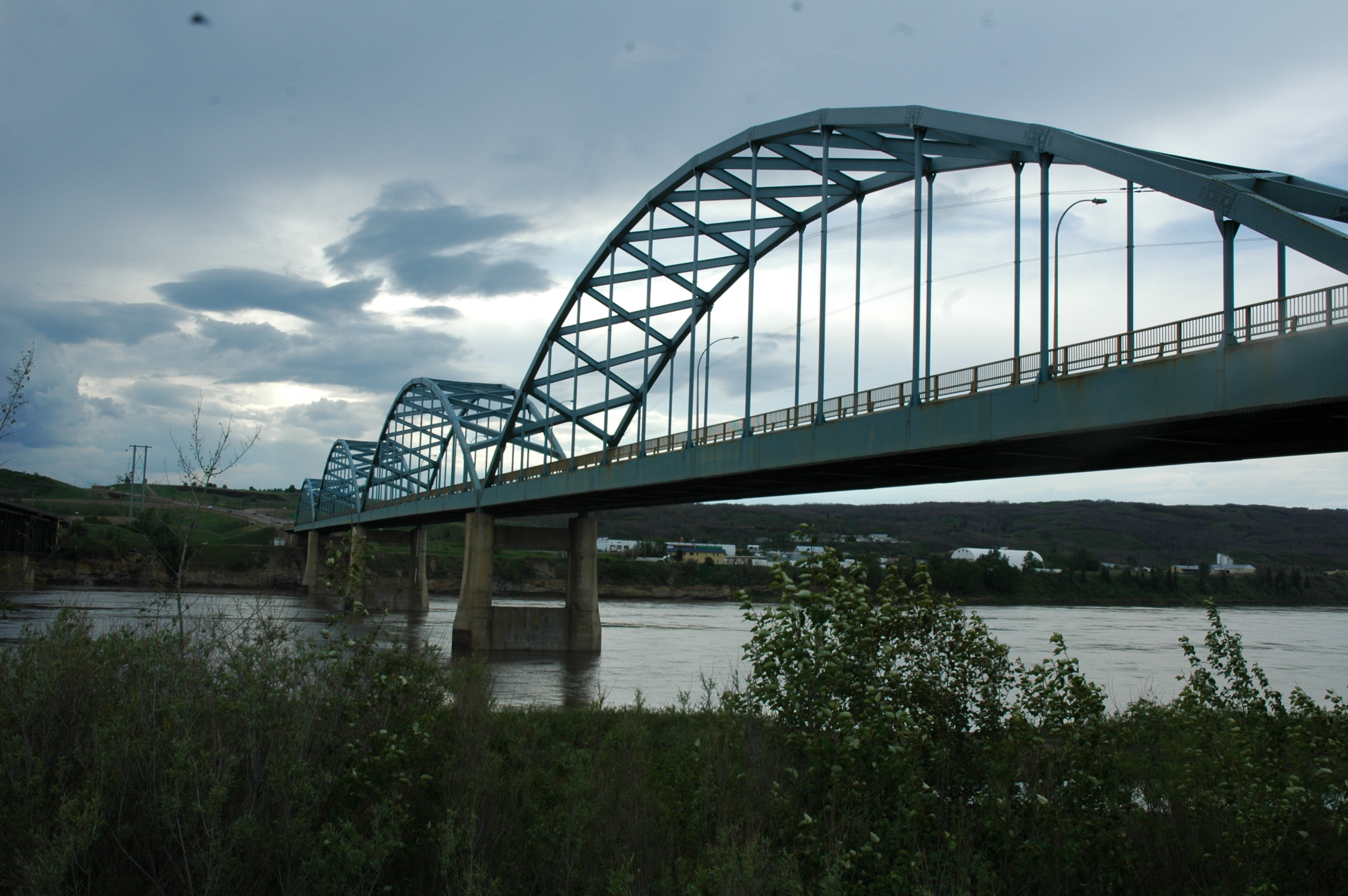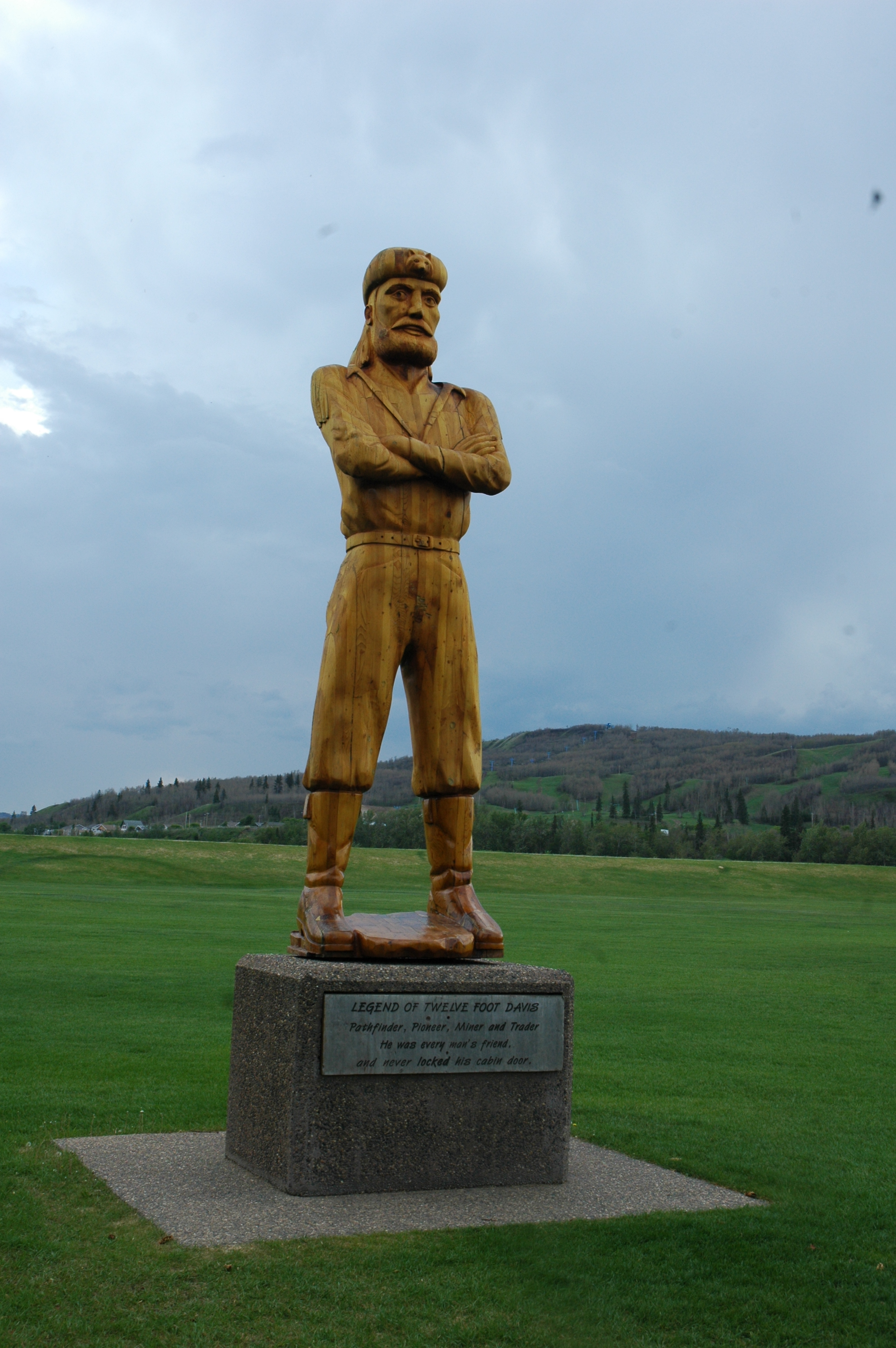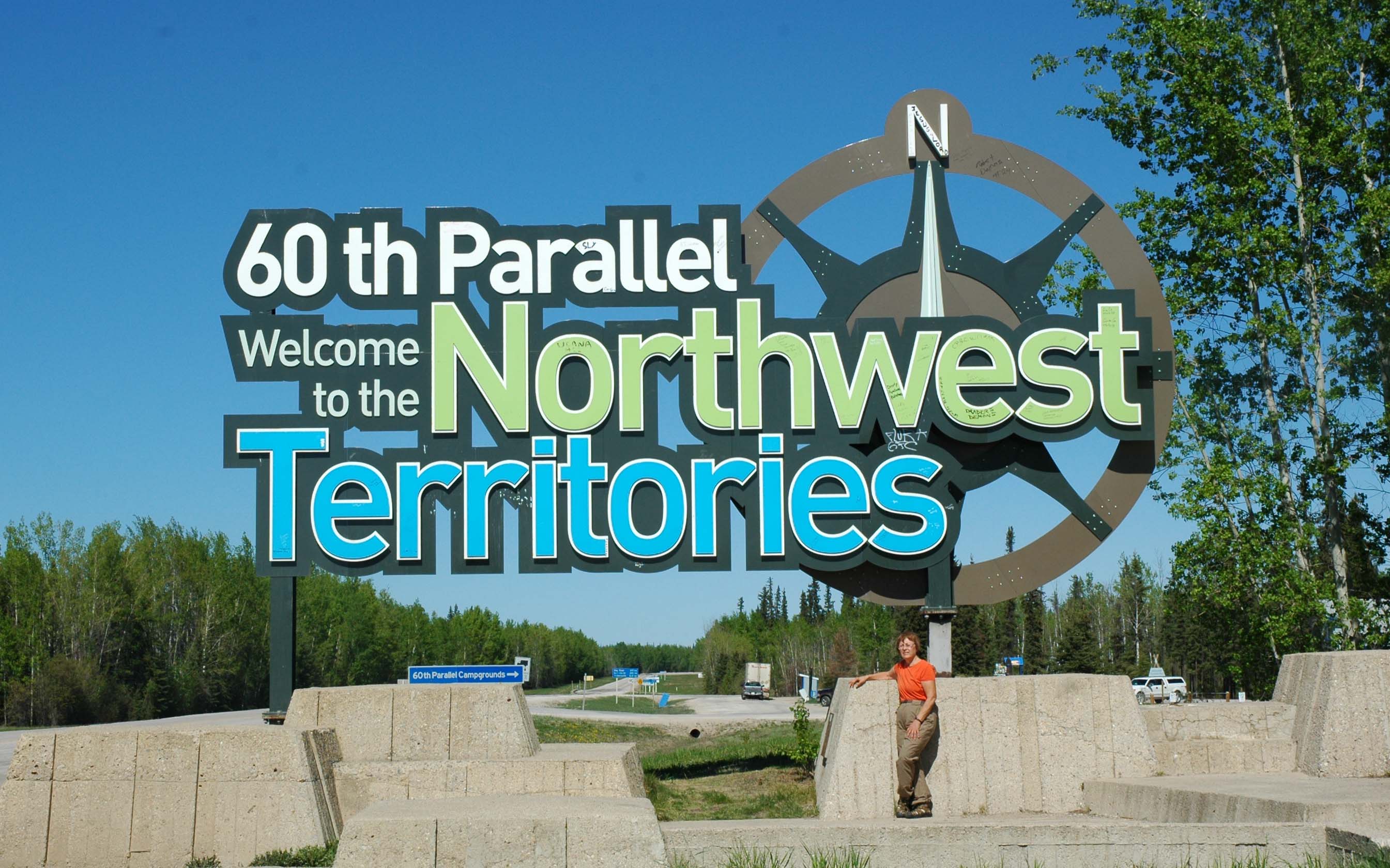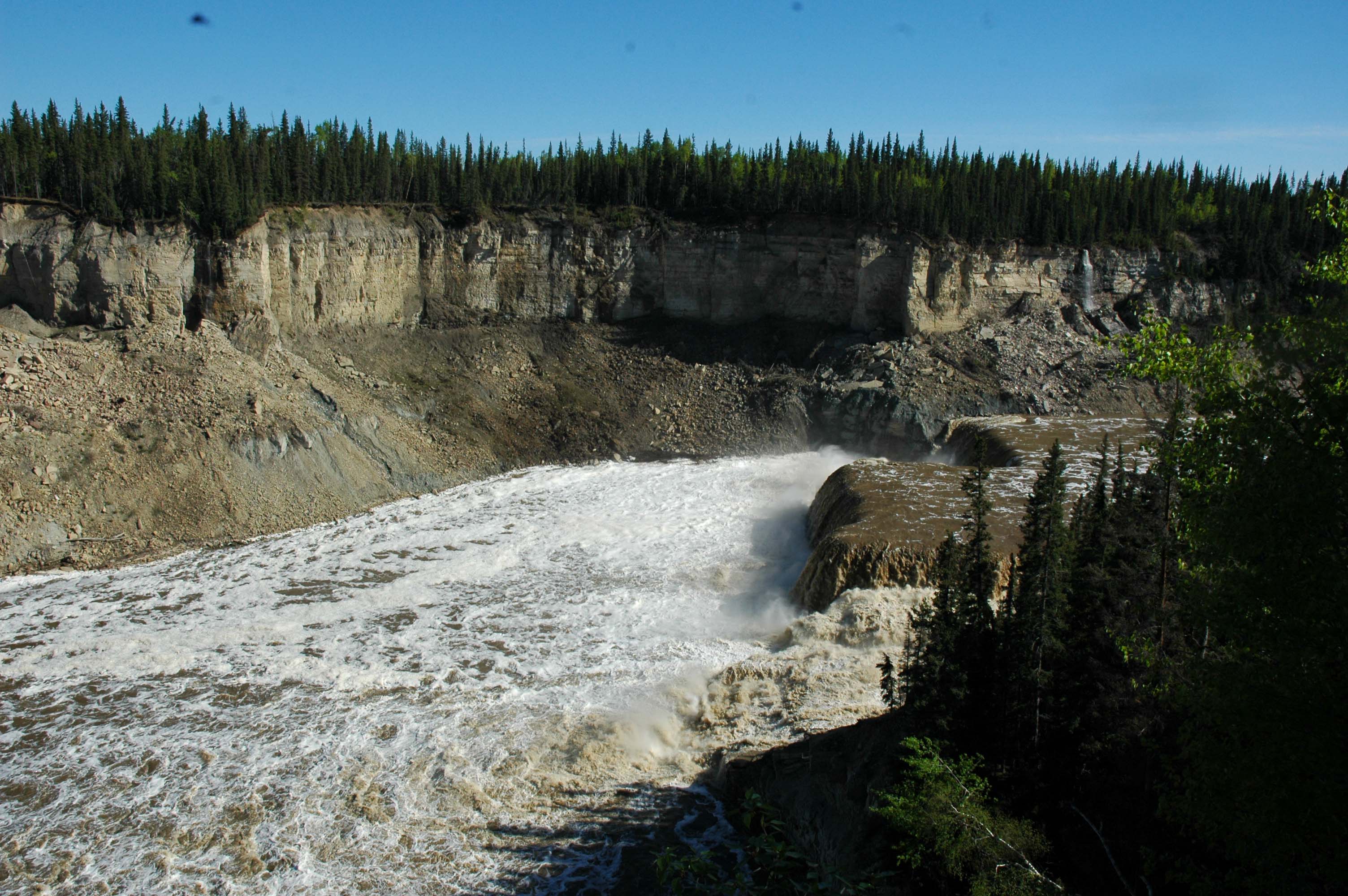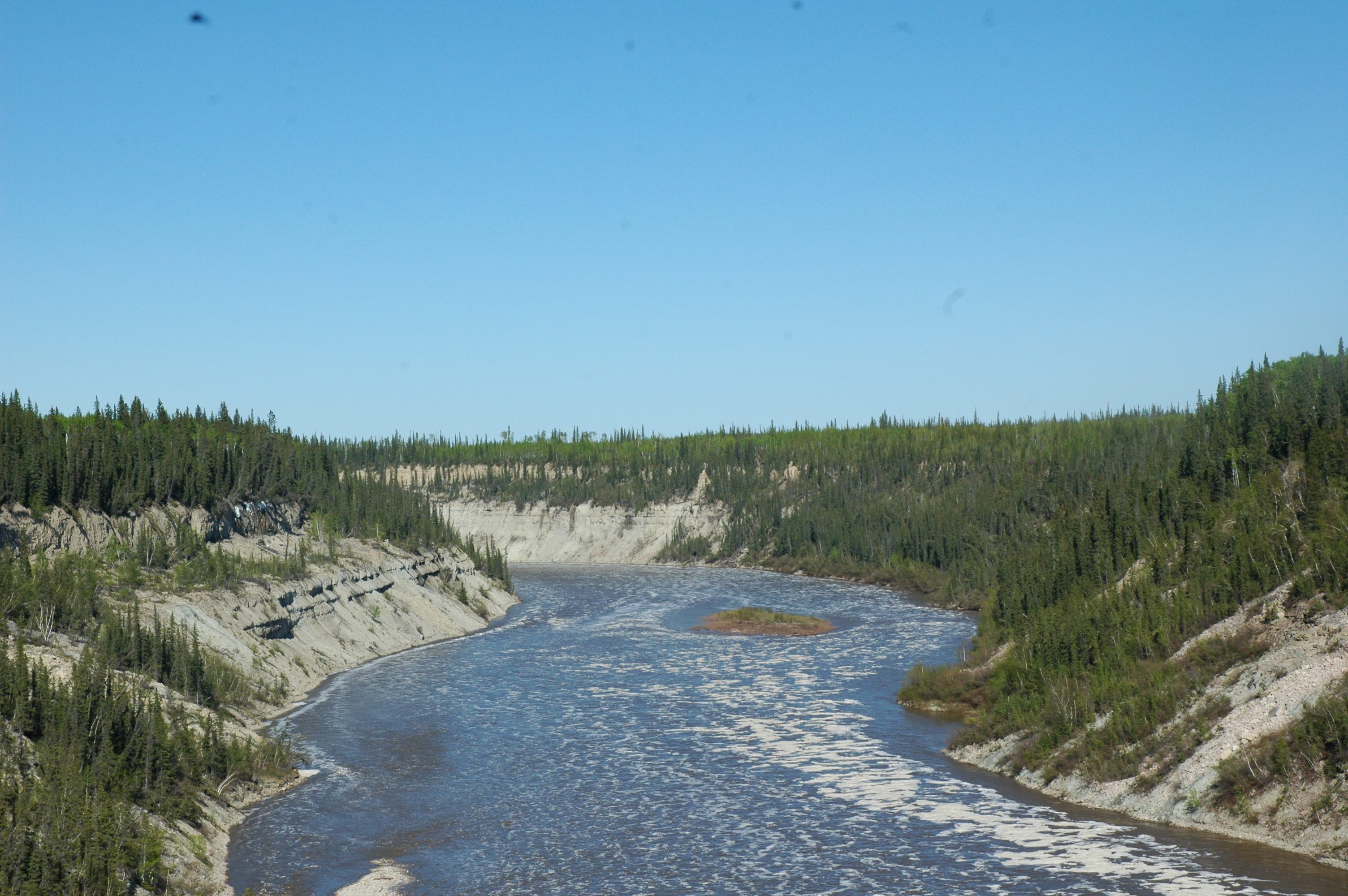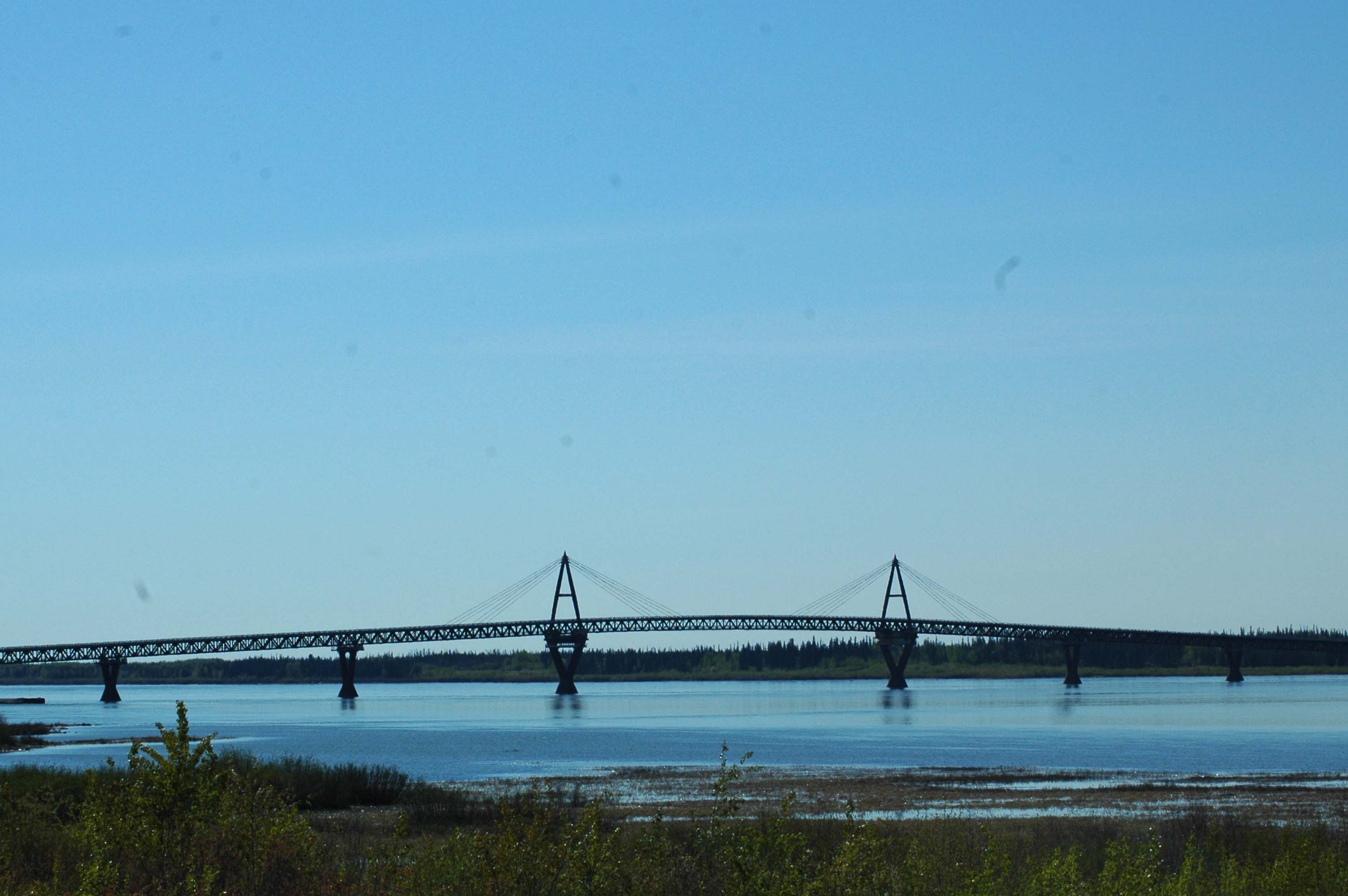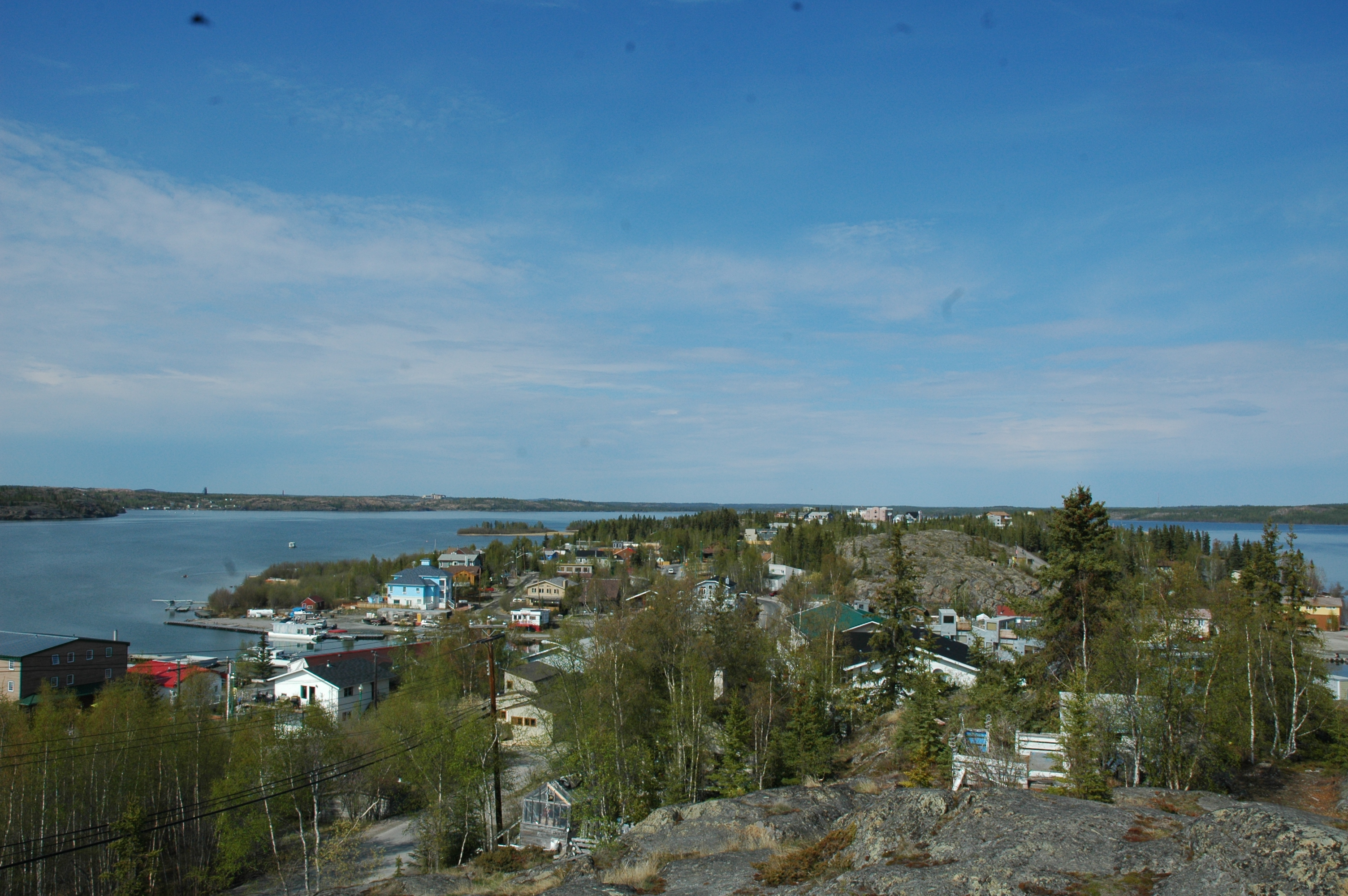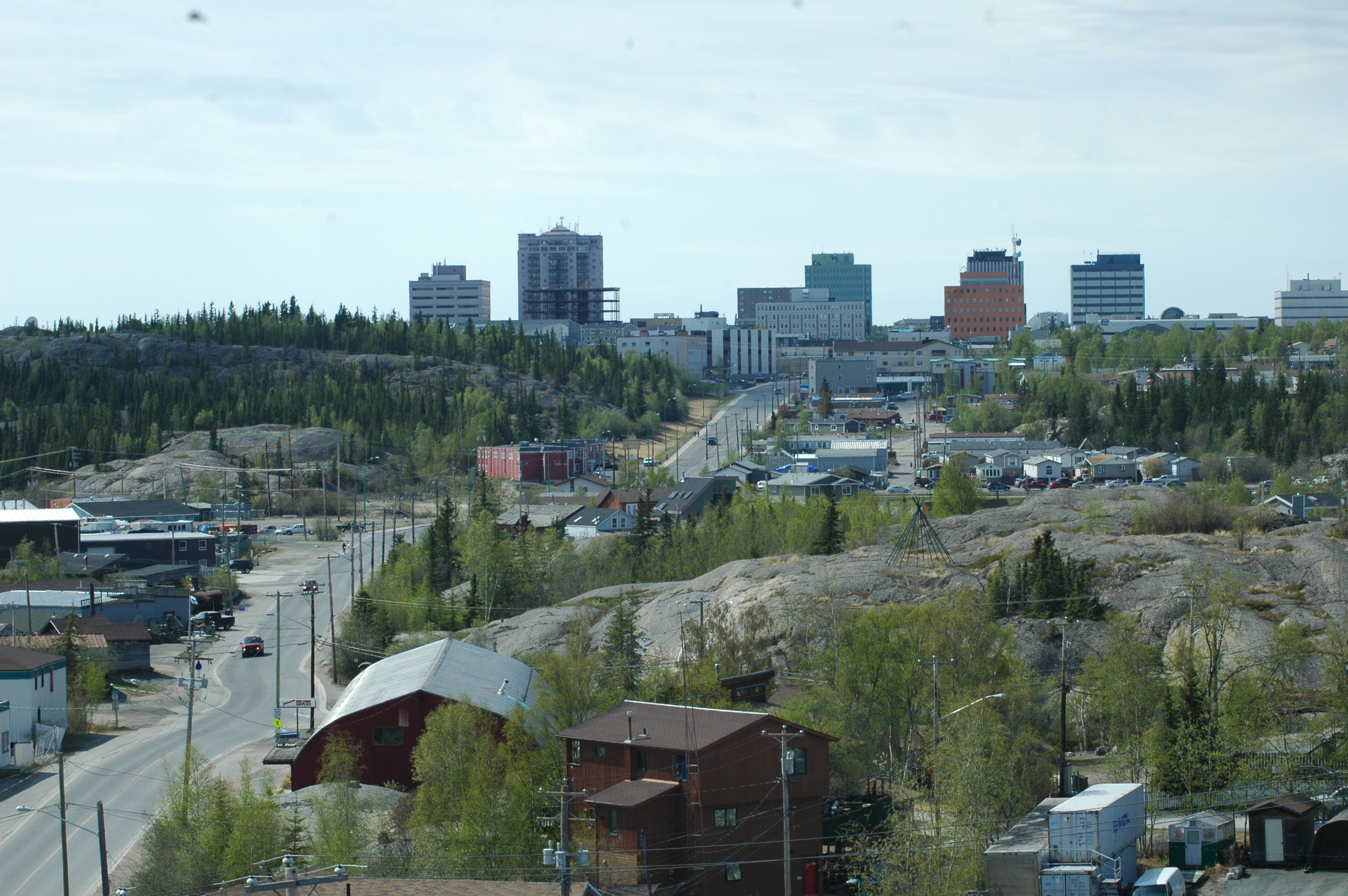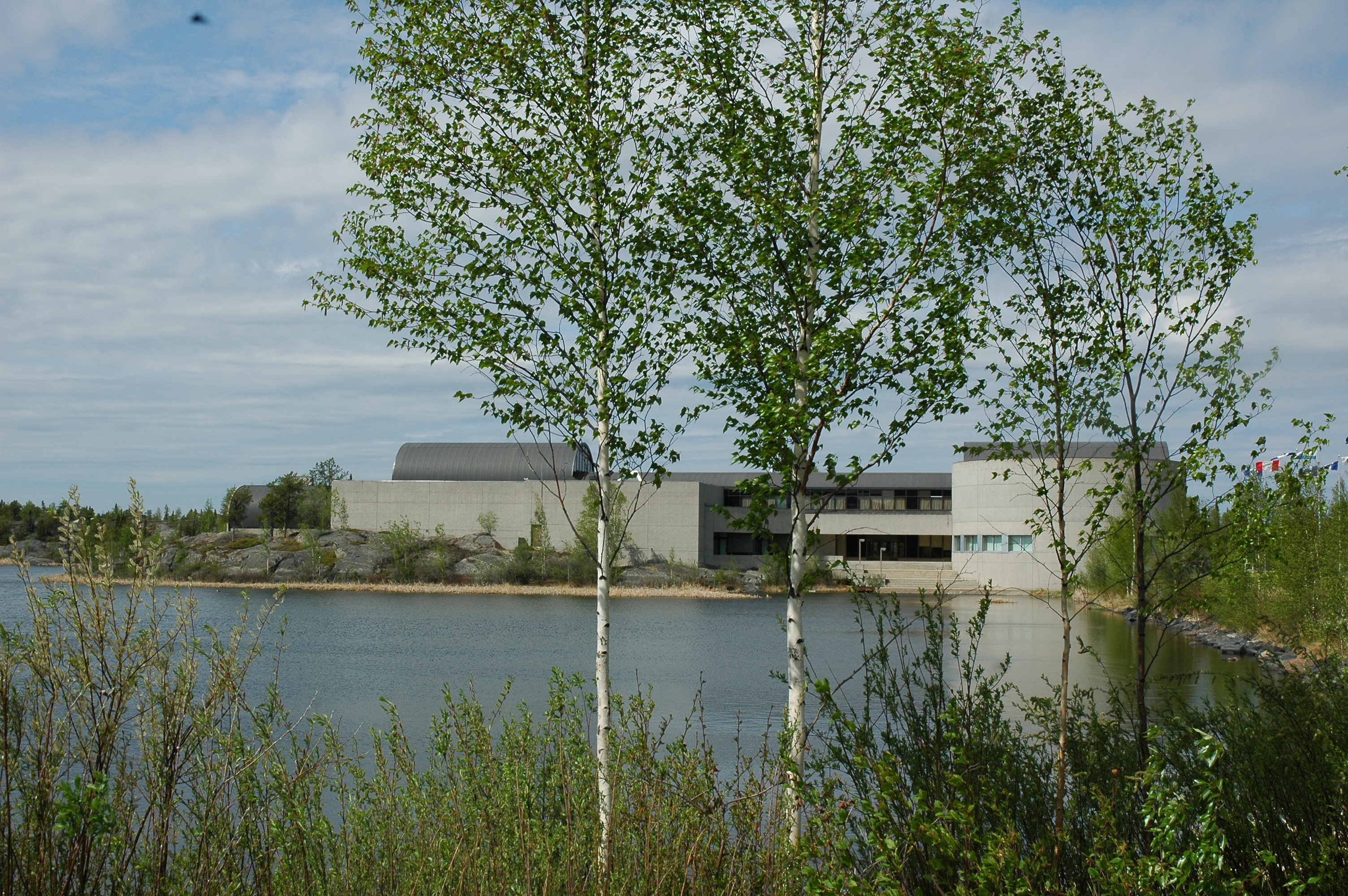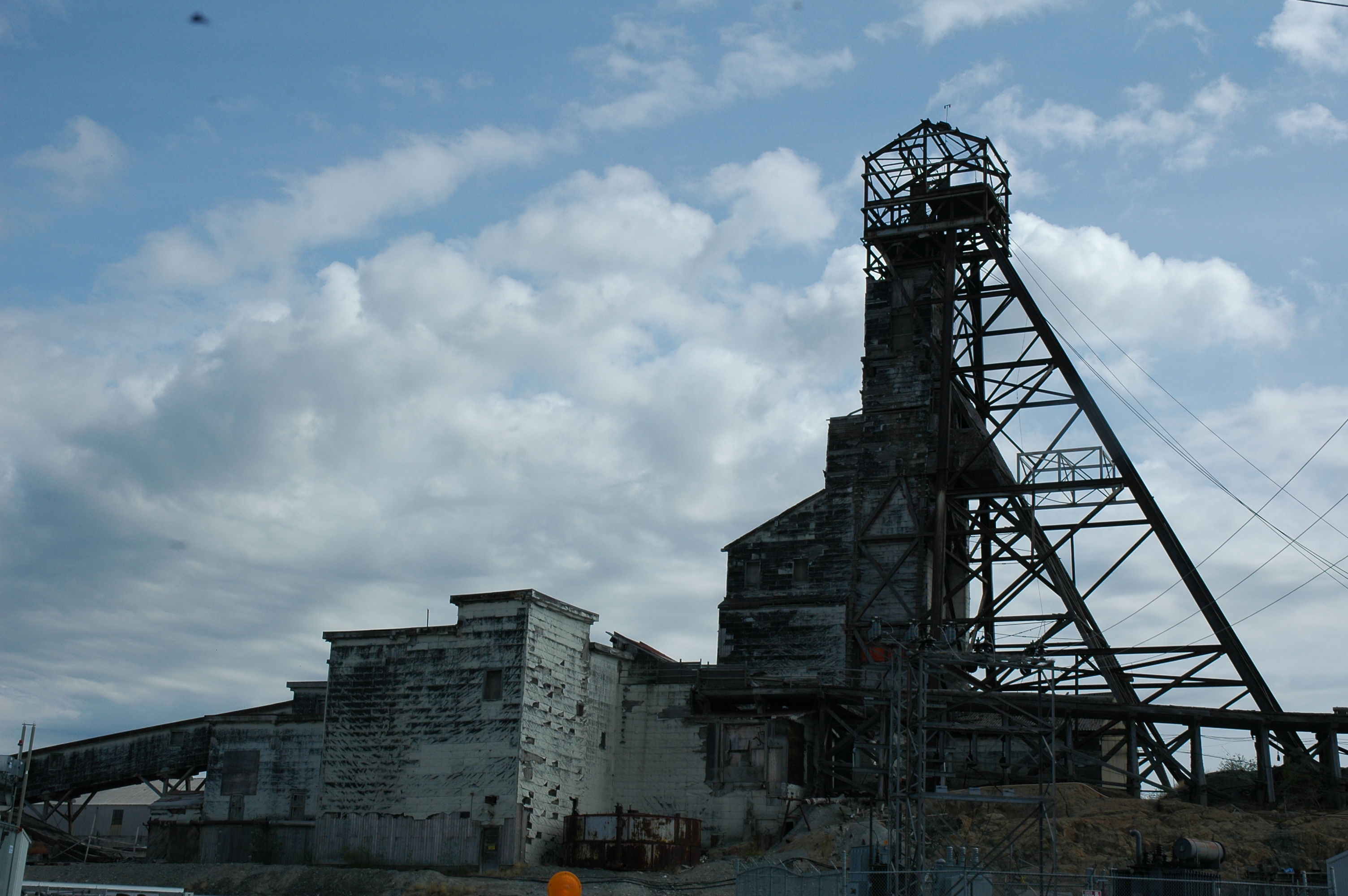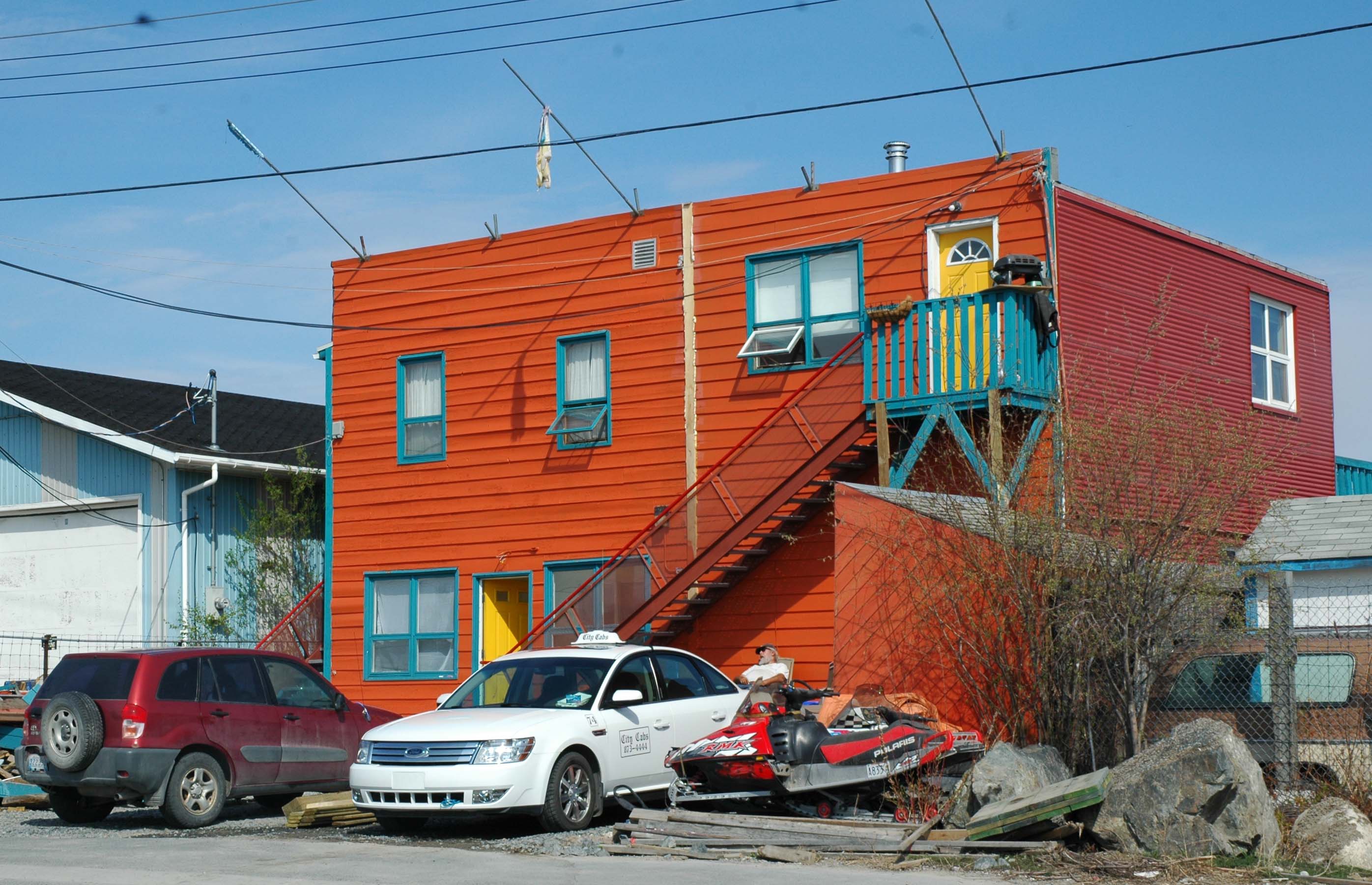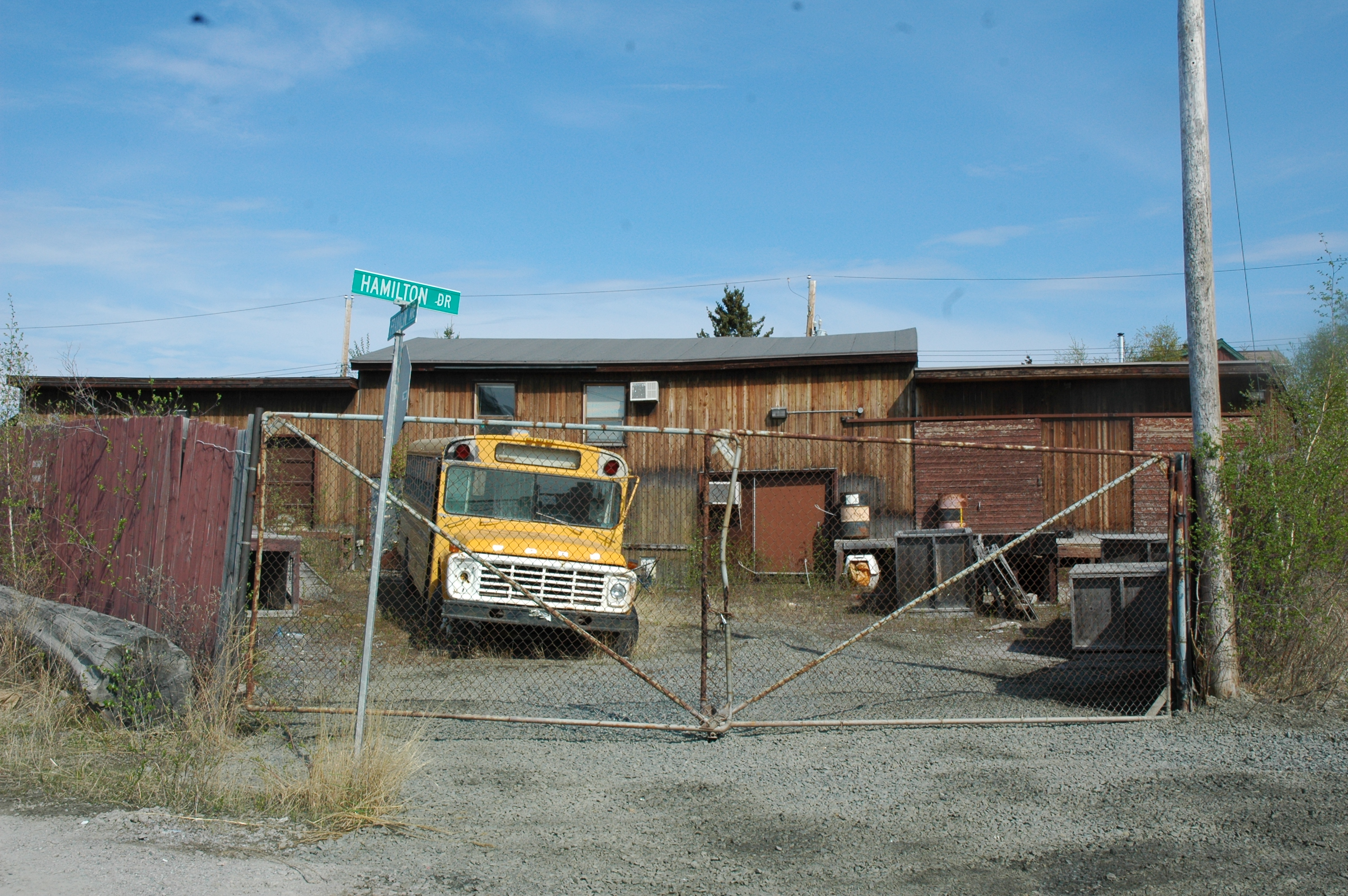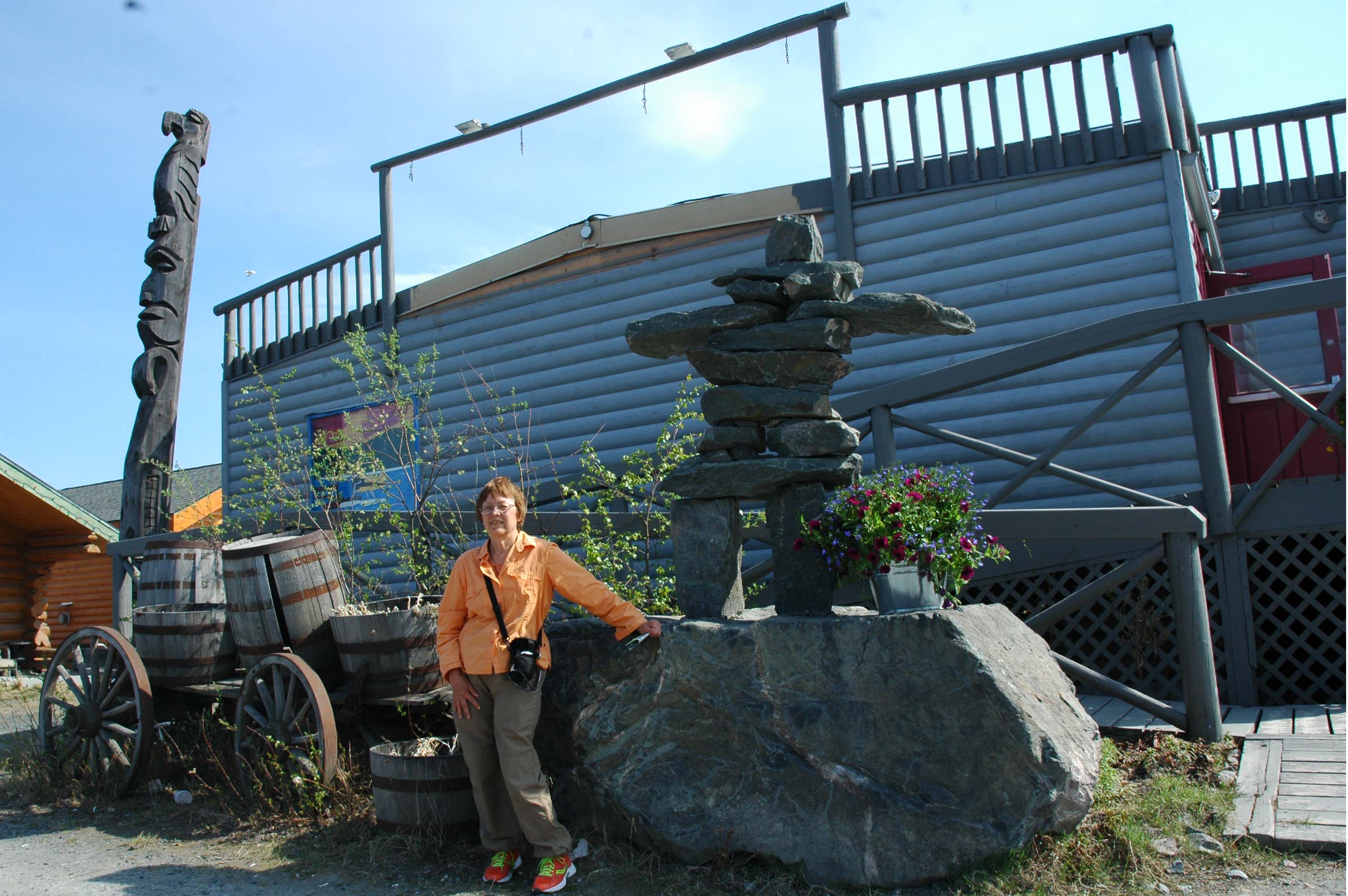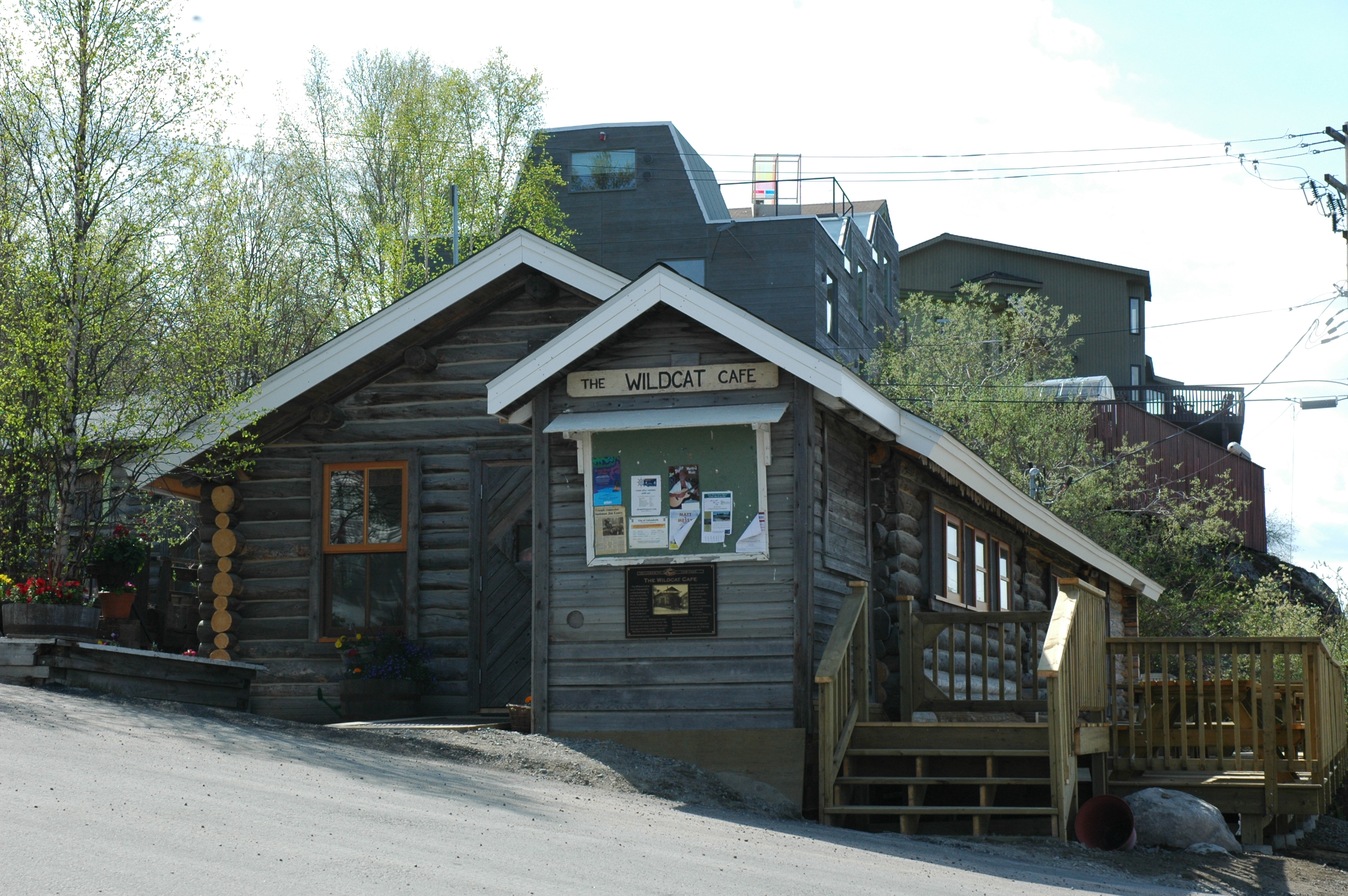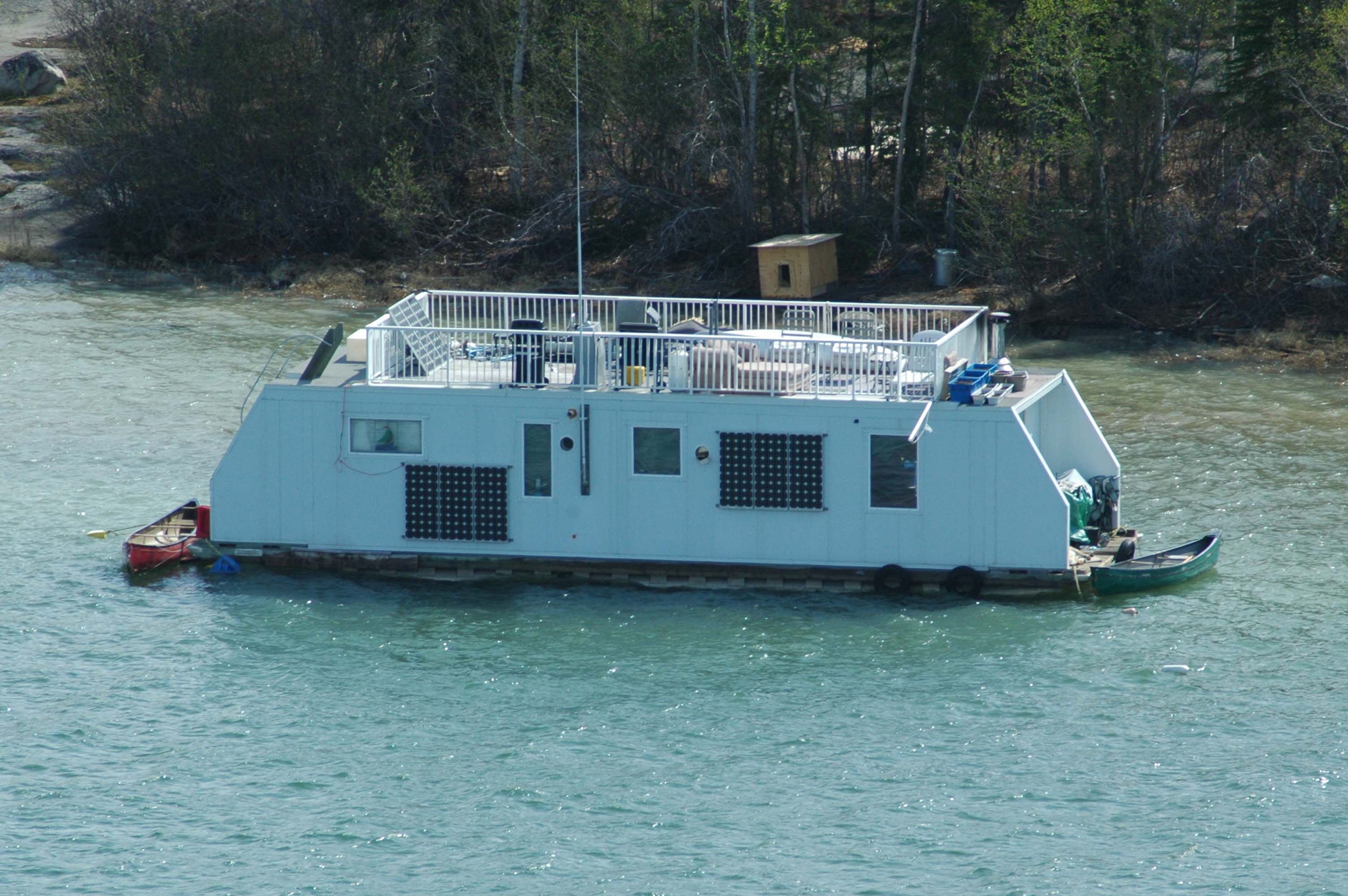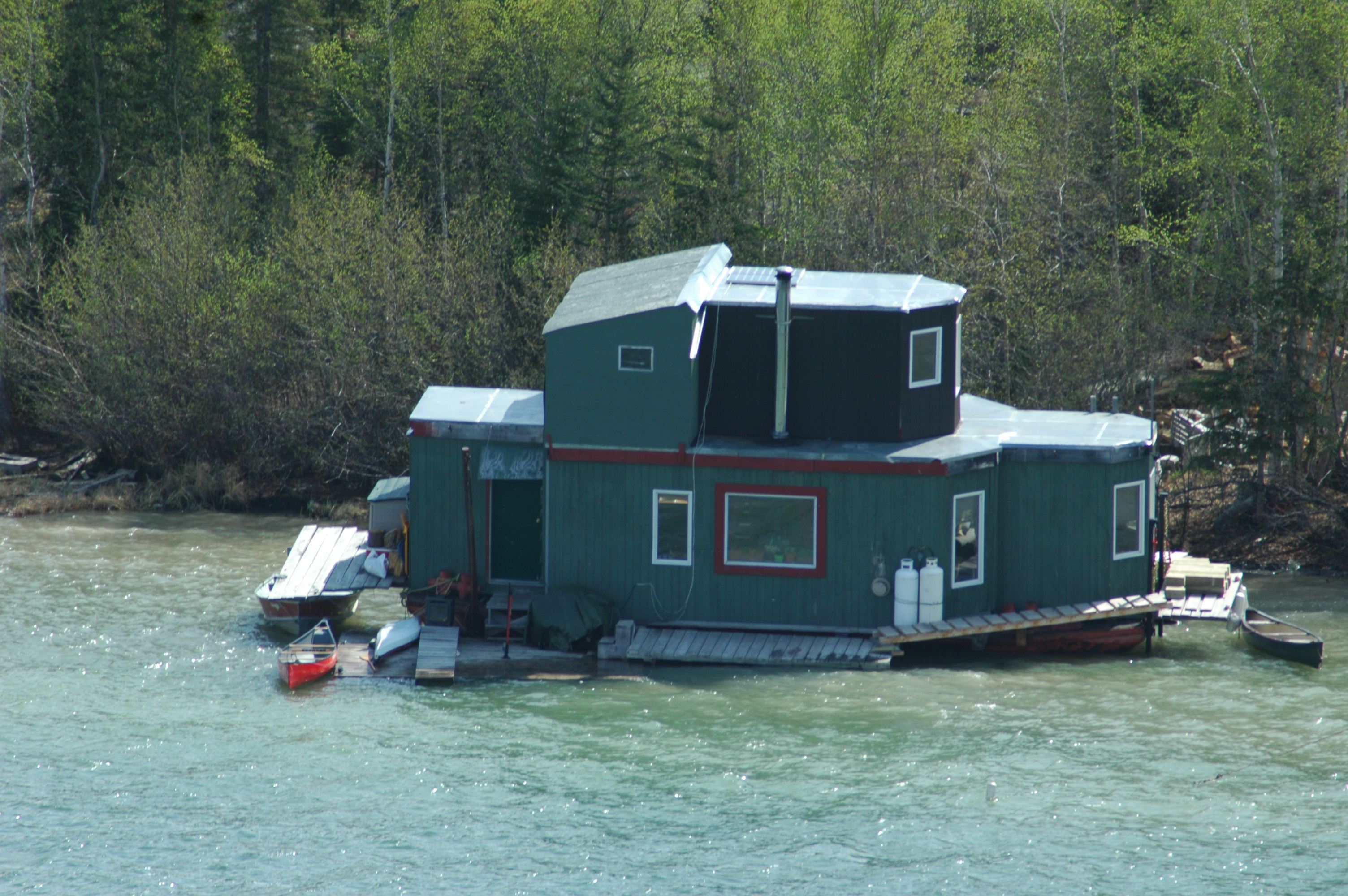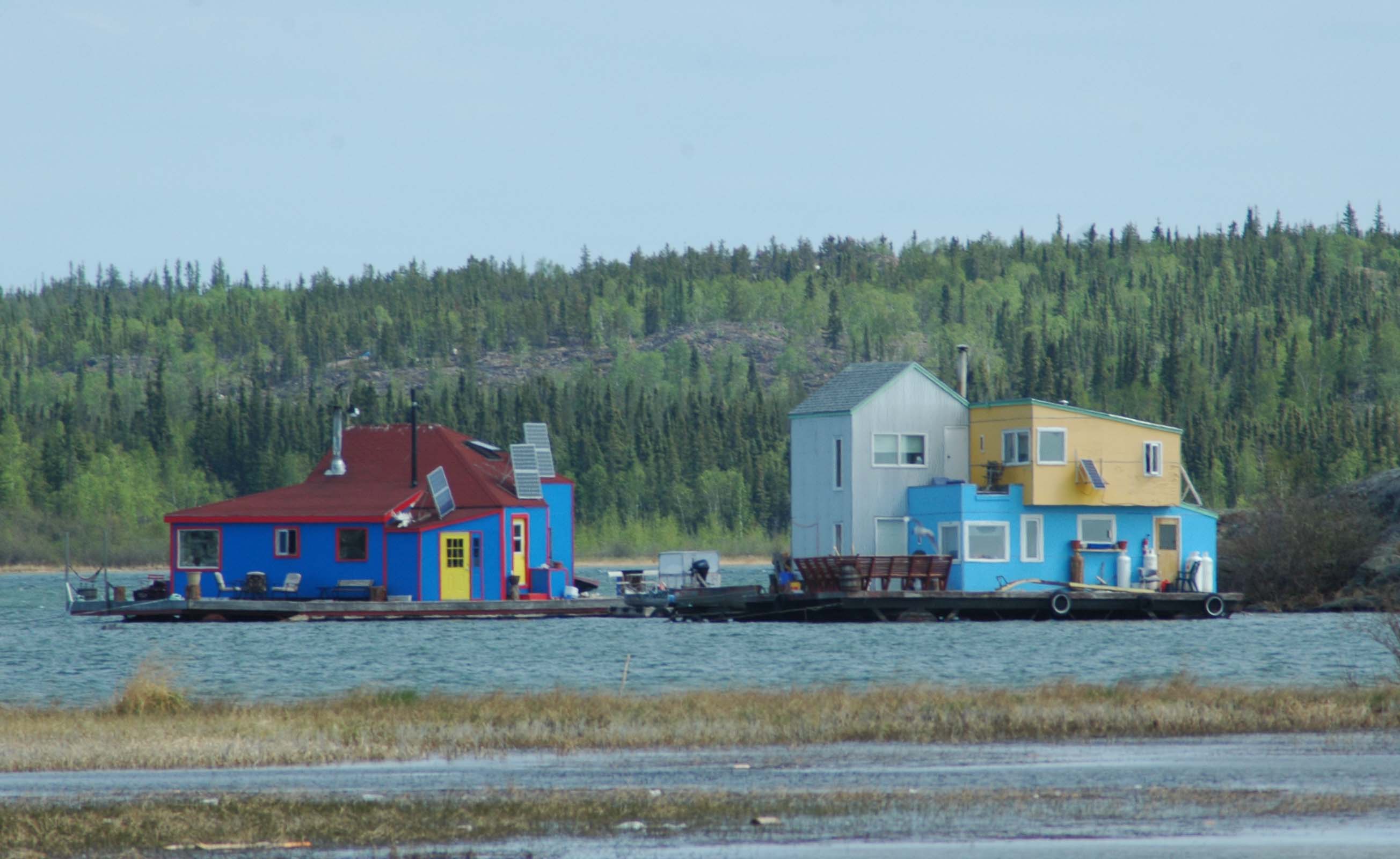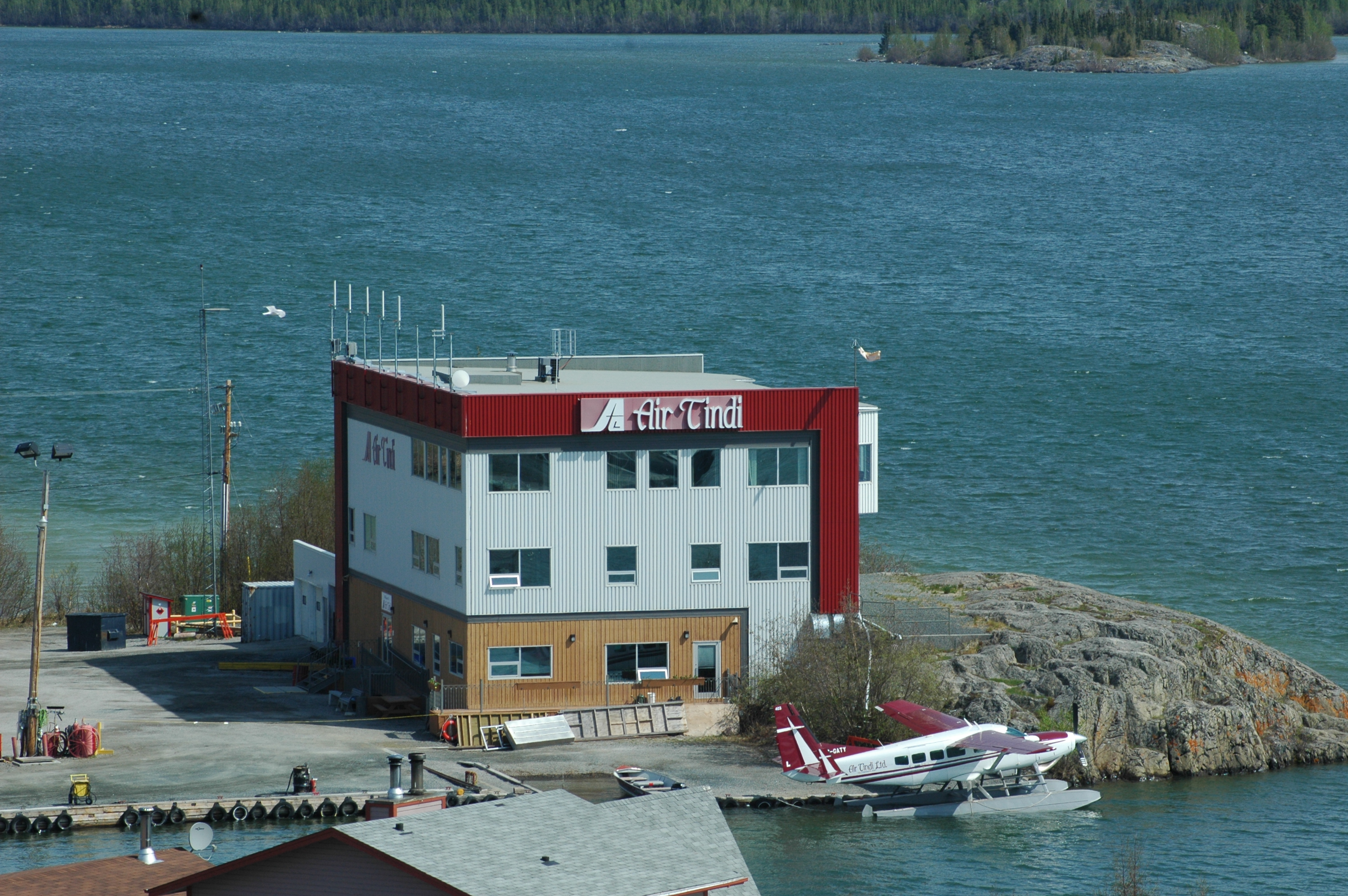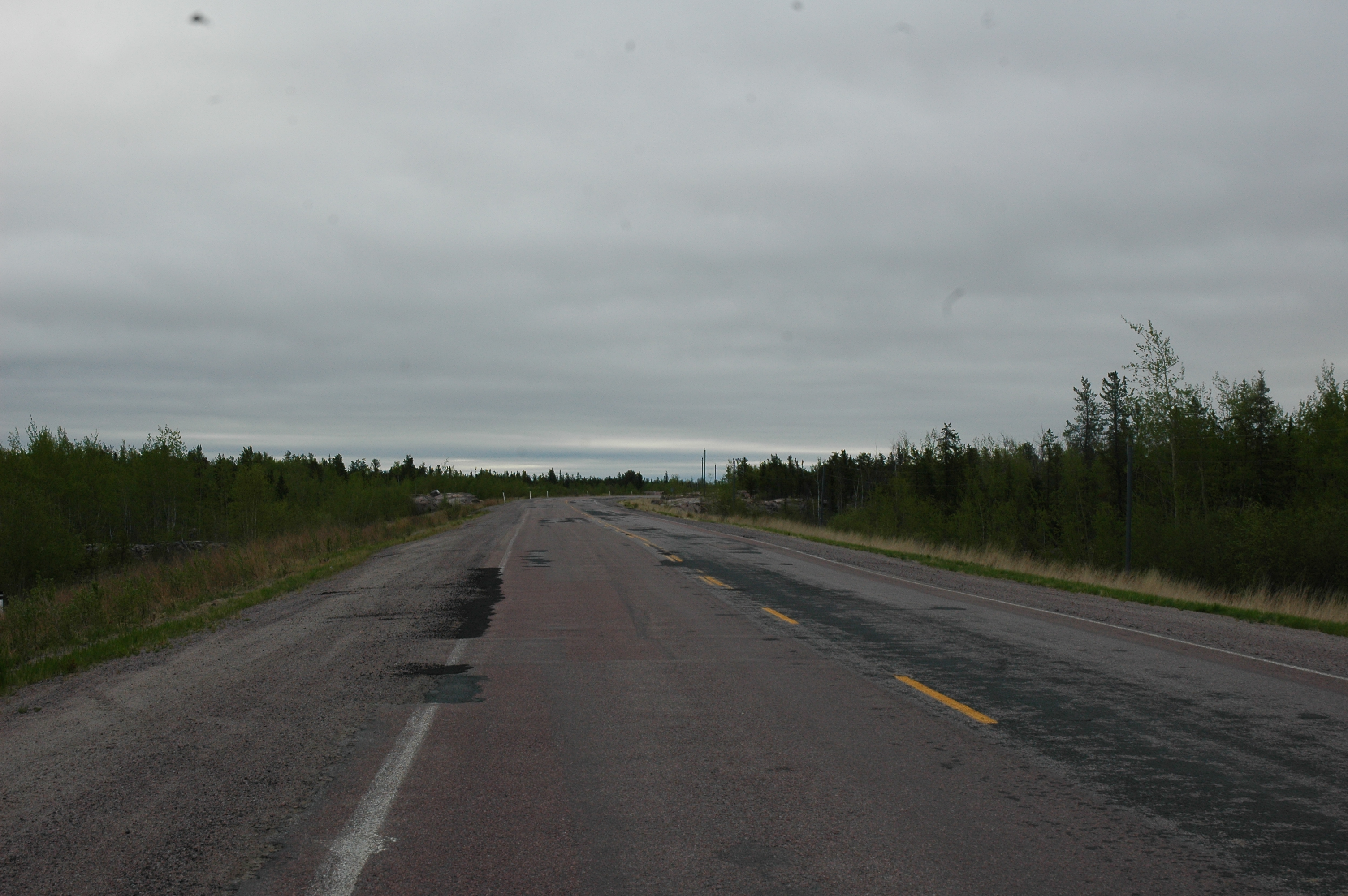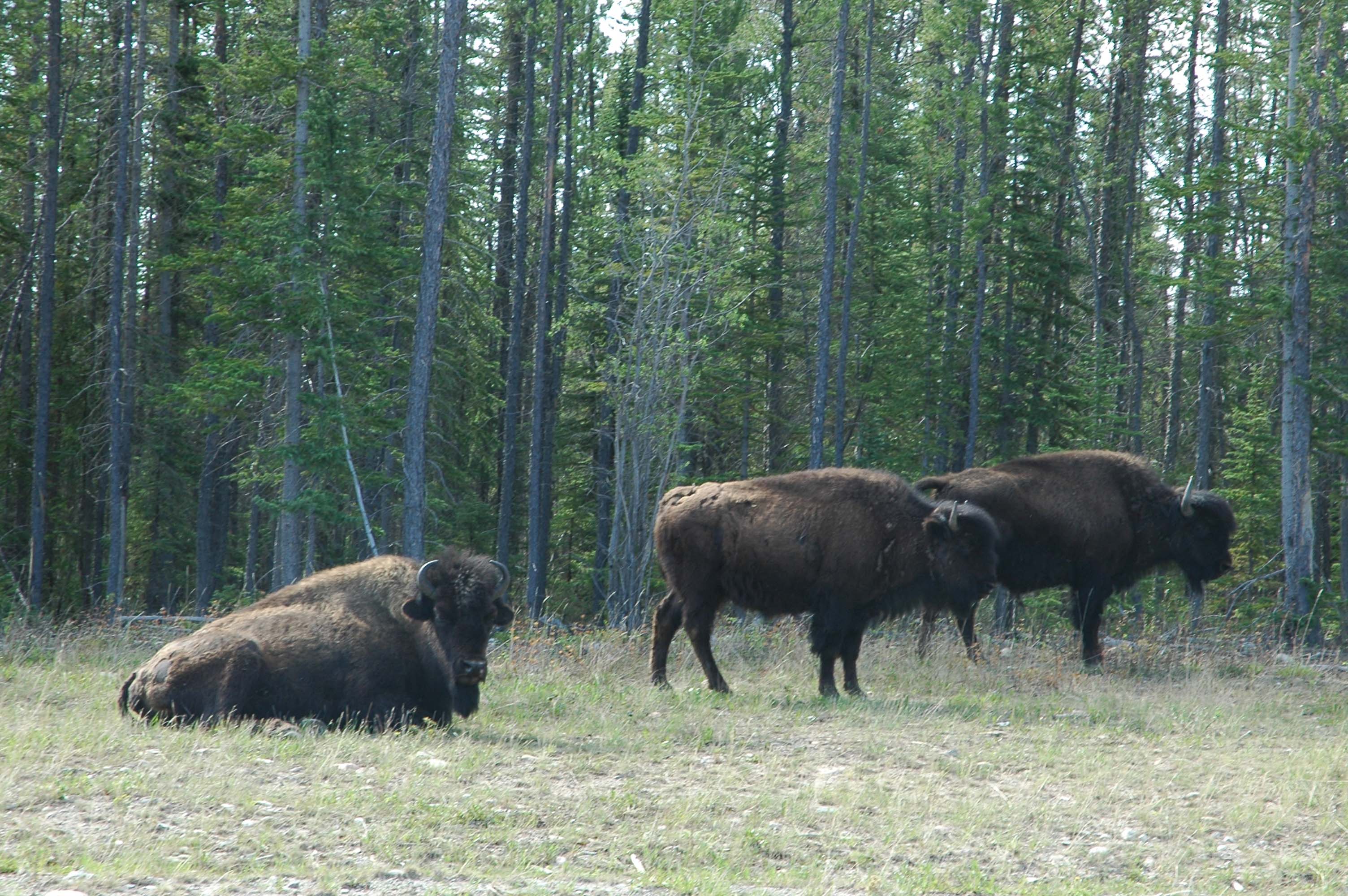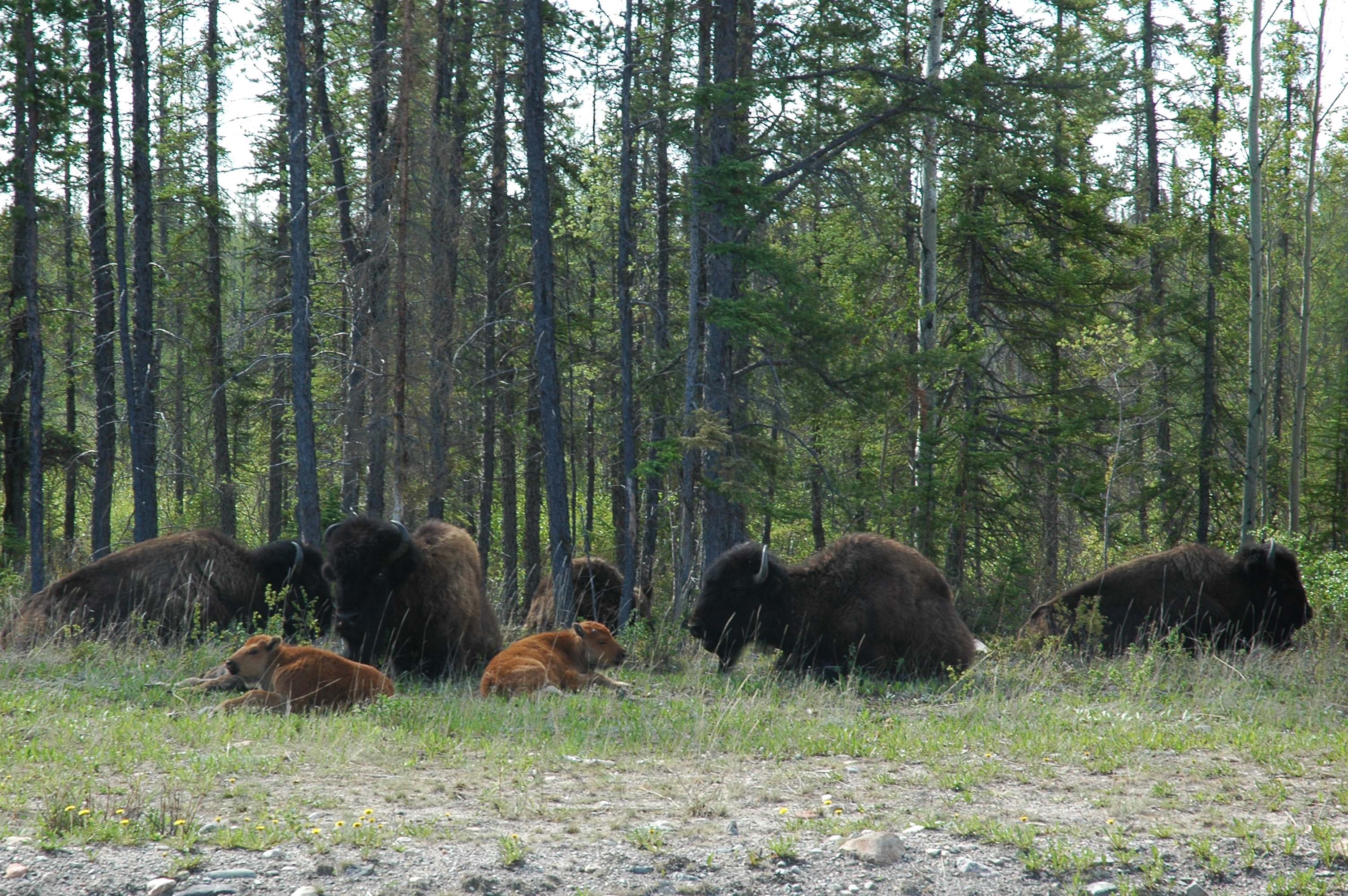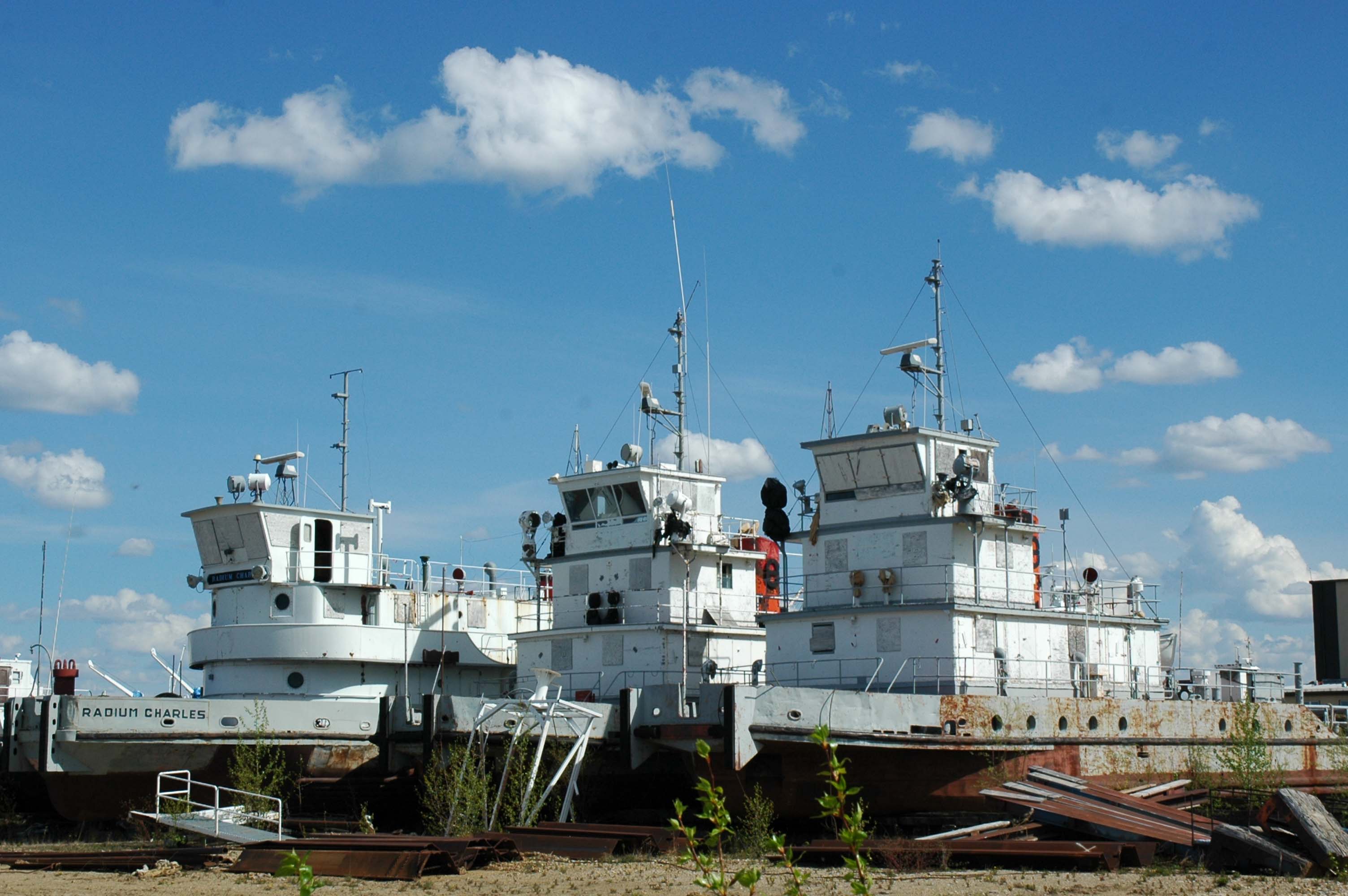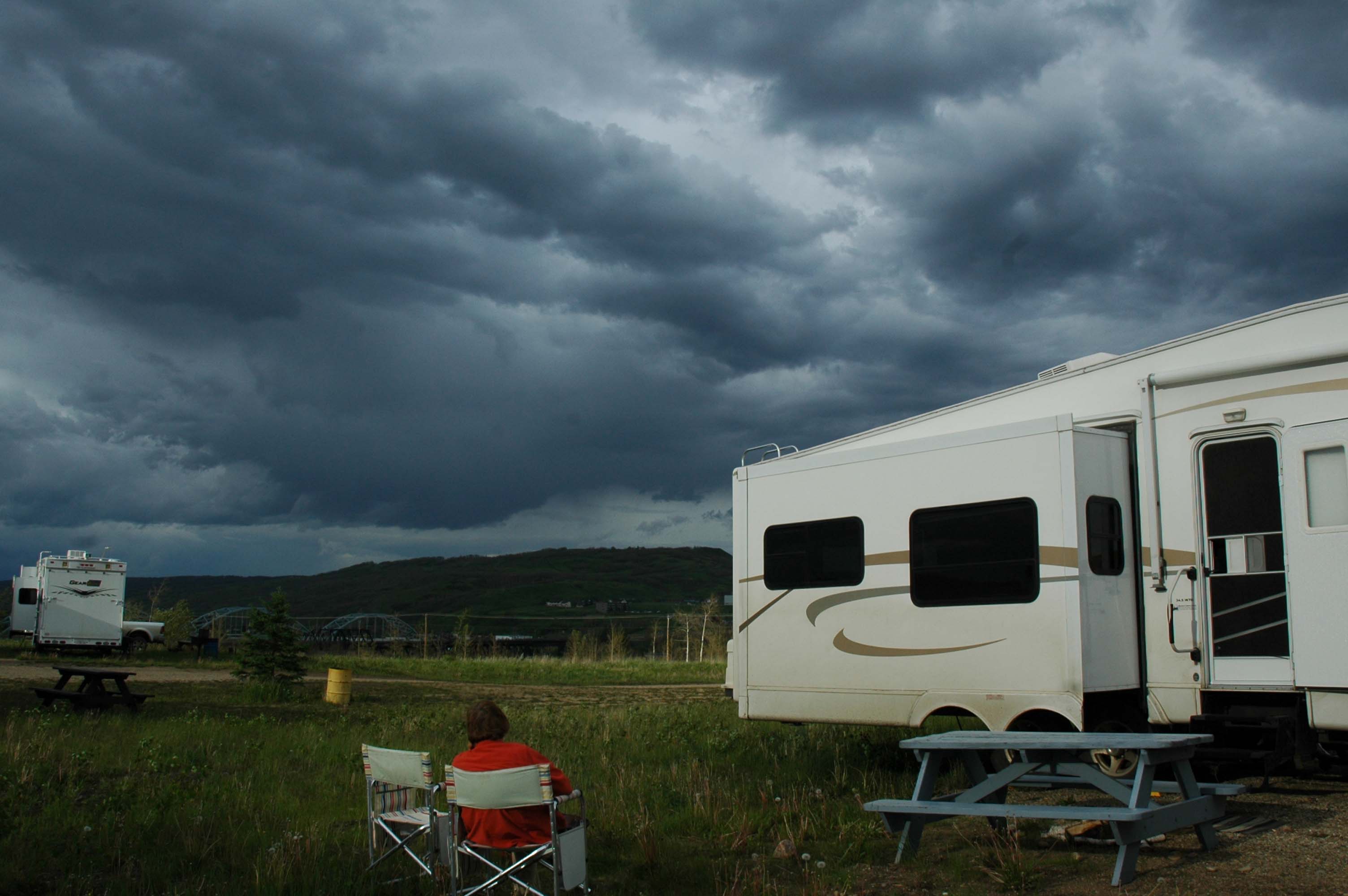Yes, we made it to The Northwest Territories (NWT). This leg of our journey grew from a concept to being a reality relatively quickly. There was an attraction and a bit of mystery that drew us to the far north. In this post assessment period, it is still considered a worthwhile adventure and we would do it again given the chance. We found it to be a very unique part of the world. The culture is fascinating as it is a blend of native Canadians and white folks (the label given to outsiders). The vast natural resources of the land and the history of inhabitants living off the land for generations are impressive.
The loop route we took is the Deh Cho which is named after the Mackenzie River. Deh Cho is Slavey Dene (Native Canadian Tribe) for big river. This is a wilderness/remote route with about 1/3 being unpaved. It is 800 miles starting in the Peace Valley in Alberta and ending at the Alaskan Highway in British Columbia. We were not able to do the entire loop due to a major washout and a temporary bridge which is unsafe for large rigs. Since we could not do the loop we decided on a side trip to Yellowknife (over 700 miles round trip from the loop).
Going north from Edmonton the flat farming terrain gives way to hills, rocks and pine trees. Our first night we stayed at Peace River which is named after the river. The trip down into the valley was very steep and never seemed to end. There we found the town folks extremely friendly and very talkative. We kept hearing about 12 foot Davis, a local legend so we had to take his pictures. Actually he was only five seven in real life and yes, he is a legend.
The next day we passed into the NWT at the 60th Parallel which is now documented by a certificate from the visitor center. Next overnight stop after a 400 mile day was Twin Falls Territorial Park. There were two nice falls on the Hay River. The water levels were high and the river was fast. There were traces of snow and lots of water falls from the melting snow off the cliffs. The park manager was from the Dene Tribe and was very personable. He gave us lots of information on the Native Canadians and their culture both present and past. Jan said she could talk to him all day.
The trip to Yellowknife was 350 miles. There is a new bridge, only a year old, which replaced the ferry service. Yellowknife is the capital of NWT (1967) and became a city in 1970. Gold was mined there for forty years. When the gold started to run out, diamonds were found in 1991 and Yellowknife is now a leader in the world Diamond production. The NWT has 45,000 total population with over one half being residents of Yellowknife. The old part of town is called the “Rock” and actually a small island which “is” all rock. There is new development referred to as “New Town”. Once outside of the city limits it becomes wilderness quickly…of course pictures included.
The old part of town is very crowded, dense and can be a bit on the seedy side at times. There are lots of small shops and does retain a connection to the past. It attracts tourists and is in the process of being redeveloped. Jan found a large Inukshuk there so we had to take a picture.
Houseboats are one thing you would never expect to find in the far north. There are lots of them and they come in all sizes and colors. The inhabitants have to leave them in the fall when the ice forms and again when it breaks up in the spring. Otherwise they are year round lodging. Looks like fun if you like boon docking and living on the water. You see lots of float planes used for regional travel. The city does have a large airport with helicopter and jet service.
The roads in NWT are in fairly rough shape. There are lots of frost heaves and sections where the pavement has been removed. At the end of the day you find things have moved around in the RV from all the jostling. Drank lots of coffee to stay alert as some of the major dips and bump are marked but many are not. The road to Yellowknife goes through a Buffalo Reserve. We saw lots of them grazing by the side of road which gave us many photo opportunities. There are many small lakes along the entire loop with water fowl and Muskrats houses to keep one entertained.
We spent three nights in Yellowknife before moving on to Hay River for two more. Hay River is the older city having been around since the 50’s (Population 3,800), second largest city in NWT. There are only the two cities of any size in NWT. Hay River came in to its own being the rail terminus for the region. The city use to be a shipping and fishing center connected by all the rivers that converge there as well as the Great Slave Lake. The town has fallen on hard times since the road was built. At the shipping terminal I counted 12, there may be more, rusting ships now permanently dry docked.
We stopped back in Peace River to catch up with the “friendly” folks we met on the way up. As you can see from the pictures there was rain for both our Peace River stops. We did manage a camp fire the last night between the rain clouds although you cannot see the fire in the picture, it is there.
Dawson Creek, British Columbia is home for two nights before taking on the Alaskan Highway. Dawson Creek is mile 0 for the Alcan. We arrived yesterday afternoon. The first thing to do was to give the RV and the truck a bath so we could find out what colors they were. Today is restocking, laundry, catching up on email, posting to the internet and planning the next week. It is a 1,500 drive to Fairbanks and we expect to be there in one week (June 14).
Life on the road is good. So far no major issues that we could not solve. The NWT tour is now logged and we are ready to take on the next leg of the Alaskan Journey.
Hope all is well with everyone out there…
God Bless,
Larry and Jan
